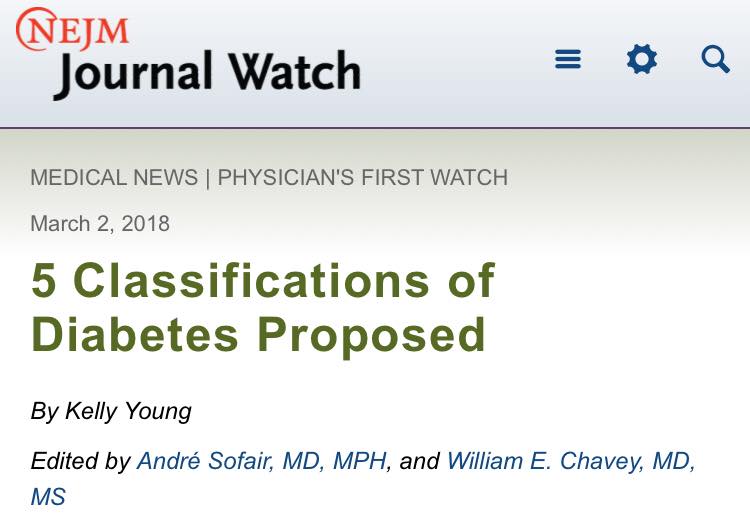- นักวิจัย ได้จัดหมวดหมู่การแบ่งประเภทเบาหวานแบบใหม่ เป็น5 กลุ่ม โดยจัดตามลักษณะอาการทางคลินิคของผู้ป่วยและลักษณะทางพันธุกรรม (clinical and genetic parameters) ตีพิมพ์ลงใน Lancet of diabetes and endocrinology
พารามิเตอร์ที่นำมาพิจารณา เช่น อายุที่เริ่มวินิจฉัยเบาหวาน มวลน้ำหนัก BMI, แอนติบอดี้ glutamate decarboxylase antibodies (GADA), น้ำตาลสะสม hemoglobin A1c (HbA1c) levels,รวมถึง homeostatic model assessment 2 to estimate beta-cell function (HOMA2-B) และ insulin resistance (HOMA2-IR) using C-peptide concentrations.
1. Severe autoimmune diabetes (formerly type 1 diabetes): affected 6% of patients in the derivation cohort; characteristics include early-onset disease, relatively low BMI, and GADA-positive
2. Severe insulin-deficient diabetes: 18% of patients; GADA-negative but similar to cluster 1; lowest HOMA2-B scores
3. Severe insulin-resistant diabetes: 15%; higher HOMA2-IR scores
4. Mild obesity-related diabetes: 22%; obese, but not insulin resistant
5. Mild age-related diabetes: 39%; older than other clusters, but largely similar to cluster 4
โดยผู้ป่วยกลุ่ม2 ที่เป็น severe insulin-deficient diabetes มีโอกาสเกิดเบาหวานขึ้นตามากสุด (retinopathy) ส่วนกลุ่ม3 severe insulin-resistant diabetes มีโอกาสเกิดไตวายเรื้อรังระยะสุดท้ายและโรคหลอดเลือดมากสุด (end-stage renal disease and coronary events)
จาก https://www.jwatch.org/…/5-classifications-diabetes-proposed









